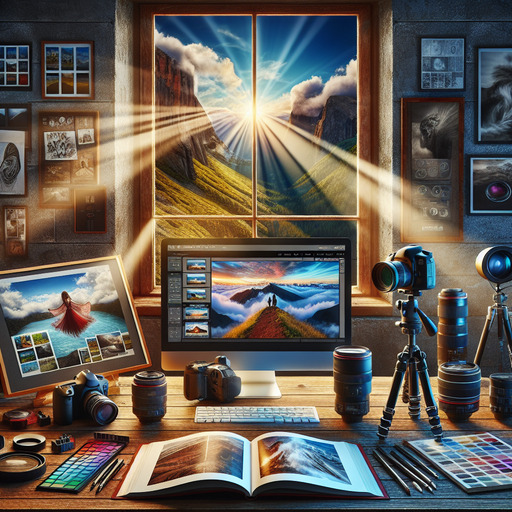
-
Table of Contents
- Mastering Photography: Tips and Techniques for Stunning Shots
- Understanding the Basics: Essential Photography Techniques
- Rule of Thirds
- Lighting: The Key to Great Photography
- Portrait Photography: Capturing the Essence of Your Subject
- Engage with Your Subject
- Use Depth of Field
- Landscape Photography: Capturing Nature’s Beauty
- Scout Locations
- Use a Tripod
- Photography Editing: Enhancing Your Images
- Choose the Right Software
- Maintain a Natural Look
- Photography Gear: Choosing the Right Equipment
- Invest in Quality Lenses
- Accessorize Wisely
- Conclusion: Elevate Your Photography Skills
- Questions and Answers
- What is the best time of day for landscape photography?
- How can I make my portrait subjects feel more comfortable?
- What editing software is recommended for beginners?
Mastering Photography: Tips and Techniques for Stunning Shots
Photography is more than just capturing moments; it’s about telling stories, evoking emotions, and creating art. Whether you’re a budding photographer or a seasoned professional, honing your skills is essential to stand out in this competitive field. In this guide, we’ll explore essential photography tips and techniques that can elevate your work, from portrait and landscape photography to editing and gear selection.
Understanding the Basics: Essential Photography Techniques
Before diving into advanced techniques, it’s crucial to master the basics. Understanding the fundamental principles of photography can significantly improve your shots.
Rule of Thirds
The rule of thirds is a simple yet powerful composition technique. Imagine your image divided into nine equal segments by two vertical and two horizontal lines. Place the most important elements along these lines or at their intersections to create a balanced and engaging composition.
Lighting: The Key to Great Photography
Lighting can make or break a photograph. Natural light is often the best choice, but understanding how to manipulate artificial lighting can open up new creative possibilities.
- Golden Hour: Capture stunning landscapes and portraits during the golden hour, shortly after sunrise or before sunset, for soft, warm lighting.
- Studio Lighting: Experiment with different lighting setups, such as three-point lighting, to achieve professional results in controlled environments.
Portrait Photography: Capturing the Essence of Your Subject
Portrait photography is about more than just taking a picture of someone; it’s about capturing their personality and essence.
Engage with Your Subject
Building rapport with your subject can lead to more natural and expressive portraits. Talk to them, make them comfortable, and encourage them to express themselves.
Use Depth of Field
A shallow depth of field can help isolate your subject from the background, drawing attention to their features. Use a wide aperture (e.g., f/1.8) to achieve this effect.
Landscape Photography: Capturing Nature’s Beauty
Landscape photography requires patience and an eye for detail. Here are some tips to help you capture breathtaking scenes.
Scout Locations
Research and visit potential locations beforehand to find the best angles and compositions. Consider factors like weather, time of day, and season.
Use a Tripod
A tripod is essential for landscape photography, especially in low-light conditions. It ensures stability and allows for long exposures, capturing more detail and depth.
Photography Editing: Enhancing Your Images
Editing is a crucial part of the photography process. It allows you to enhance your images and bring your creative vision to life.
Choose the Right Software
Popular editing software like Adobe Lightroom and Photoshop offer powerful tools for adjusting exposure, color, and composition. Explore tutorials to make the most of these programs.
Maintain a Natural Look
While editing can enhance your photos, it’s important to avoid over-processing. Aim for a natural look that stays true to the original scene.
Photography Gear: Choosing the Right Equipment
Having the right gear can make a significant difference in your photography. However, it’s not always about having the most expensive equipment.
Invest in Quality Lenses
Lenses often have a greater impact on image quality than the camera body. Consider investing in a versatile prime lens or a zoom lens with a wide aperture.
Accessorize Wisely
Accessories like filters, tripods, and external flashes can enhance your photography. Choose accessories that complement your style and needs.
Conclusion: Elevate Your Photography Skills
Mastering photography requires practice, patience, and a willingness to learn. By understanding the basics, exploring different techniques, and investing in the right gear, you can create stunning images that captivate and inspire. Remember, the journey of a photographer is a continuous learning process, so keep experimenting and pushing your creative boundaries.
For more insights and resources on photography, visit Wikipedia’s Photography Page.
Questions and Answers
What is the best time of day for landscape photography?
The best time for landscape photography is during the golden hour, shortly after sunrise or before sunset, when the light is soft and warm.
How can I make my portrait subjects feel more comfortable?
Engage with your subjects by talking to them and making them feel at ease. Encourage them to express themselves naturally for more authentic portraits.
What editing software is recommended for beginners?
Adobe Lightroom is a great choice for beginners due to its user-friendly interface and powerful editing tools. There are also many tutorials available to help you get started.
If you’re interested in learning more about photography or our services, please reach out to us via our contact page.